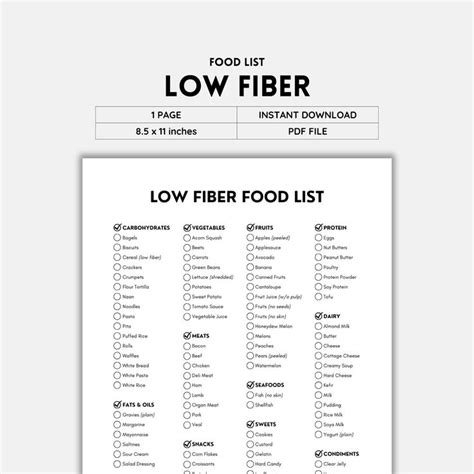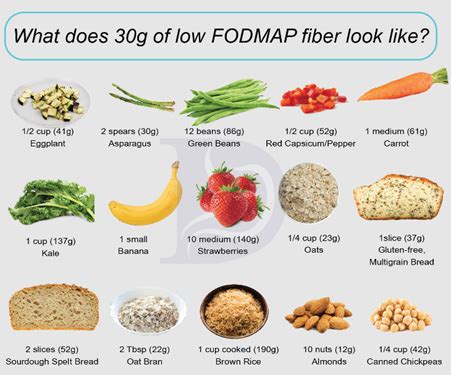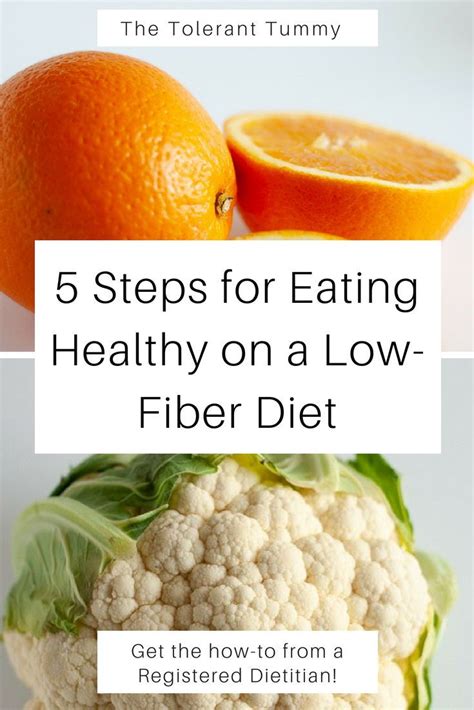Intro
Discover 5 low fiber foods that are gentle on digestion, including low-fiber fruits, vegetables, and grains, perfect for digestive health and low-fiber diets, reducing symptoms of IBS and promoting healthy gut bacteria with minimal fiber intake.
Eating a balanced diet that includes a variety of foods is essential for maintaining good health. However, some individuals may need to limit their fiber intake due to certain medical conditions or dietary restrictions. Fiber is an essential nutrient that plays a crucial role in promoting digestive health, preventing constipation, and supporting healthy blood sugar levels. While it's generally recommended to consume a high-fiber diet, there are instances where low-fiber foods are necessary. In this article, we'll explore the importance of low-fiber foods, their benefits, and provide a list of 5 low-fiber foods that can be included in a restricted diet.
A low-fiber diet is often prescribed for individuals who have undergone certain surgeries, such as bowel surgery, or those who have medical conditions like inflammatory bowel disease, gastroparesis, or diarrhea. In these cases, a low-fiber diet can help reduce the risk of complications and promote healing. Additionally, some people may experience digestive issues, such as bloating, gas, or abdominal pain, after consuming high-fiber foods. In these situations, incorporating low-fiber foods into their diet can help alleviate symptoms and improve overall digestive health.
It's essential to note that a low-fiber diet should be followed under the guidance of a healthcare professional or registered dietitian. They can help individuals create a personalized meal plan that meets their specific nutritional needs while minimizing the risk of complications. A well-planned low-fiber diet can include a variety of foods from different food groups, ensuring that individuals receive the necessary nutrients for optimal health.
Understanding Low-Fiber Foods

Low-fiber foods are those that contain less than 2 grams of fiber per serving. These foods can be found in various food groups, including fruits, vegetables, proteins, dairy products, and grains. When following a low-fiber diet, it's crucial to choose foods that are low in fiber but still rich in essential nutrients like vitamins, minerals, and protein. Some examples of low-fiber foods include cooked vegetables, lean meats, fish, poultry, eggs, and low-fiber fruits like bananas and avocados.
Benefits of Low-Fiber Foods
Low-fiber foods can provide several benefits, particularly for individuals who require a restricted diet. Some of the advantages of low-fiber foods include: * Reduced risk of complications after surgery * Improved digestive health in individuals with certain medical conditions * Relief from symptoms like bloating, gas, and abdominal pain * Easier digestion and absorption of nutrients * Increased tolerance to foods that may be difficult to digest5 Low-Fiber Foods to Include in Your Diet

Here are 5 low-fiber foods that can be included in a restricted diet:
- Chicken breast: Chicken breast is a lean protein that contains less than 1 gram of fiber per 3-ounce serving. It's an excellent source of protein, vitamins, and minerals like niacin, vitamin B6, and selenium.
- Mashed potatoes: Mashed potatoes are a low-fiber food that can be easily digested. One medium-sized potato contains about 1 gram of fiber. However, it's essential to remove the skin, which is high in fiber.
- Bananas: Bananas are a low-fiber fruit that can be included in a restricted diet. One medium-sized banana contains about 1 gram of fiber. They're also a good source of potassium, vitamin C, and vitamin B6.
- Eggs: Eggs are a low-fiber food that can be easily incorporated into a low-fiber diet. One large egg contains about 0.5 grams of fiber. They're an excellent source of protein, vitamins, and minerals like vitamin D, vitamin B12, and iron.
- Cottage cheese: Cottage cheese is a low-fiber dairy product that can be included in a restricted diet. One cup of cottage cheese contains about 1 gram of fiber. It's an excellent source of protein, calcium, and vitamins like vitamin B12 and vitamin D.
Tips for Incorporating Low-Fiber Foods into Your Diet
When following a low-fiber diet, it's essential to incorporate a variety of foods to ensure that you're getting all the necessary nutrients. Here are some tips for incorporating low-fiber foods into your diet: * Choose cooked vegetables instead of raw vegetables, which can be high in fiber * Opt for lean proteins like chicken, fish, and eggs * Select low-fiber fruits like bananas, avocados, and melons * Incorporate low-fiber dairy products like cottage cheese, milk, and yogurt * Limit your intake of whole grains, which can be high in fiberManaging a Low-Fiber Diet

Managing a low-fiber diet requires careful planning and attention to detail. Here are some tips for managing a low-fiber diet:
- Keep a food diary to track your fiber intake
- Consult with a healthcare professional or registered dietitian to create a personalized meal plan
- Choose low-fiber foods from a variety of food groups
- Avoid high-fiber foods like whole grains, legumes, and raw vegetables
- Stay hydrated by drinking plenty of water
Common Mistakes to Avoid
When following a low-fiber diet, there are several common mistakes to avoid: * Not consulting with a healthcare professional or registered dietitian * Not keeping track of fiber intake * Not incorporating a variety of low-fiber foods * Not staying hydrated * Not avoiding high-fiber foodsConclusion and Next Steps

In conclusion, a low-fiber diet can be an effective way to manage certain medical conditions or dietary restrictions. By incorporating low-fiber foods into your diet and avoiding high-fiber foods, you can reduce the risk of complications and promote healing. Remember to consult with a healthcare professional or registered dietitian to create a personalized meal plan that meets your specific nutritional needs.
We invite you to share your thoughts and experiences with low-fiber diets in the comments section below. If you have any questions or concerns, please don't hesitate to reach out. Additionally, if you found this article helpful, please share it with others who may benefit from this information.
What is a low-fiber diet?
+A low-fiber diet is a dietary plan that restricts the intake of high-fiber foods, typically to less than 10-15 grams of fiber per day.
Who may benefit from a low-fiber diet?
+Individuals who have undergone certain surgeries, have medical conditions like inflammatory bowel disease, or experience digestive issues like bloating, gas, or abdominal pain may benefit from a low-fiber diet.
How can I incorporate low-fiber foods into my diet?
+Choose cooked vegetables, lean proteins, low-fiber fruits, and low-fiber dairy products. Consult with a healthcare professional or registered dietitian to create a personalized meal plan.
What are some common mistakes to avoid when following a low-fiber diet?
+Not consulting with a healthcare professional or registered dietitian, not keeping track of fiber intake, not incorporating a variety of low-fiber foods, not staying hydrated, and not avoiding high-fiber foods are common mistakes to avoid.
How long should I follow a low-fiber diet?
+The duration of a low-fiber diet varies depending on individual needs and medical conditions. Consult with a healthcare professional or registered dietitian to determine the best course of action.
